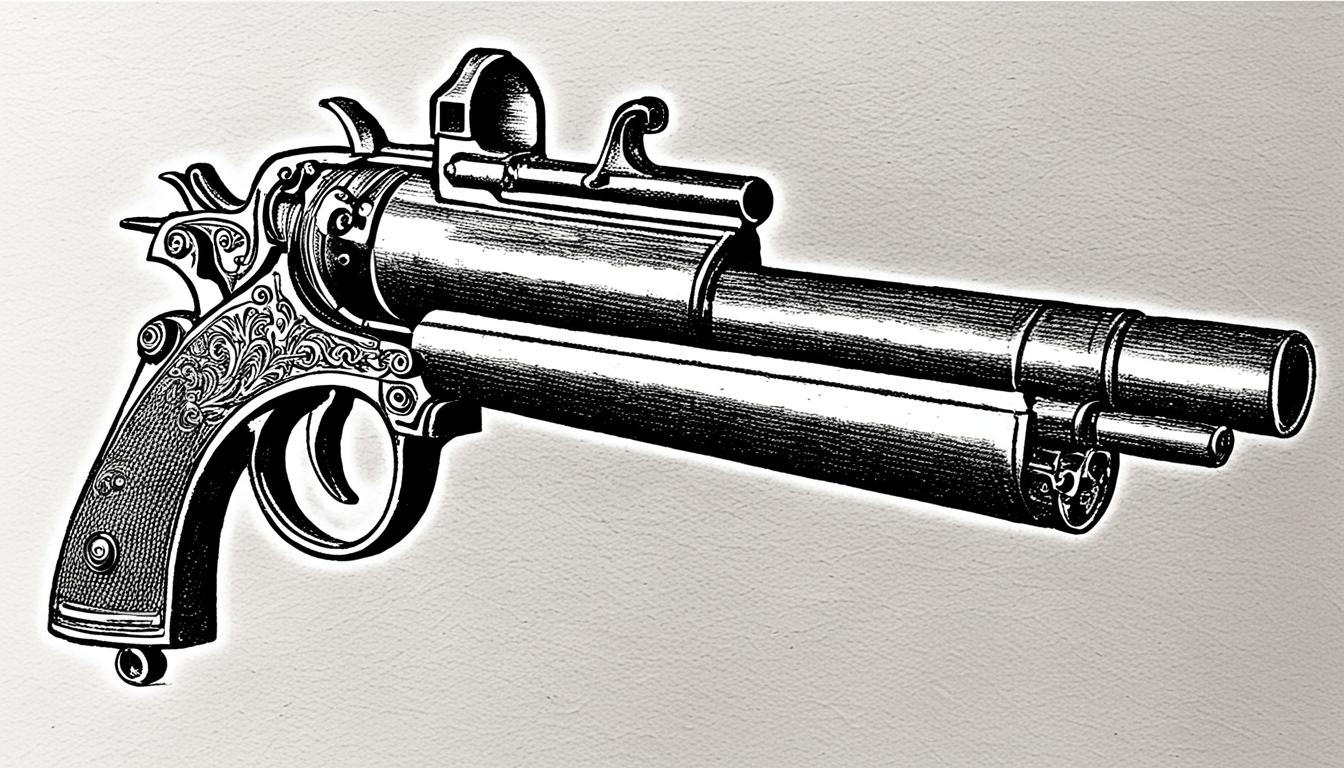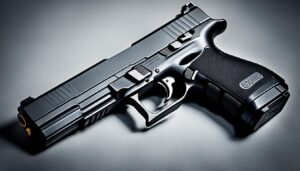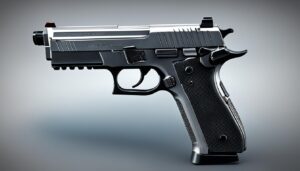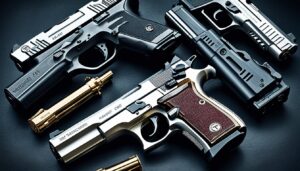Welcome to an engaging journey through history as we unravel the history of firearms and take a close-up look at the origin of handguns. From the ancient discovery of gunpowder to the formidable hand cannons that changed the face of warfare, the story of firearms is as explosive as the inventions themselves. Our quest to understand the inception of personal weaponry will lay bare the developments and designs that have led to the sophisticated arms of modern times.
The early handguns were not only impressive feats of military hardware but also marvels of the era’s engineering and craftsmanship. The invention of gunpowder, a pivotal leap forward in military technology by the Chinese, charted a new course in the annals of conflict and personal defense, giving rise to handheld devices that would grow to become extensions of power for soldiers and citizens alike.
Stay with us as we delve into the past to discover the milestones of firearm evolution and the indelible marks they have left on society. From their primitive beginnings to their prominent place in modern culture, handguns have a storied past that is a crucial piece of the larger puzzle that is the history of human ingenuity and survival.
The Genesis of Firearms: From Cannons to Hand Guns
The rich tapestry of firearm history illustrates a remarkable journey from ancient Chinese gunpowder invention to the sophisticated firearms of today. Tracing the evolution of firearms reveals how they have shaped societies and cultures around the world. The development of gunpowder, initially used for ceremonial purposes, would soon alter the dynamics of warfare and personal defense, influencing the rise of gun culture globally.
Early Chinese Inventions and Gunpowder
The inception of gunpowder is an extraordinary chapter in Chinese history. Originally concocted by alchemists searching for immortality, this serendipitous blend of sulphur, charcoal, and saltpetre marked the beginning of an era. Historical records credit its discovery to the Tang dynasty, with subsequent dynasties refining its potency, using it in fireworks and eventually, as a formidable force in cannons.
The Transition from Cannons to Personal Firearms
As metallurgy and technology progressed, the transformation took place from the formidable cannons, embodiments of raw power confined to armories and battlefields, to the first incarnations of handguns—more personal, portable, yet still powerful weapons. This transition marked a pivotal moment in the evolution of firearms, propelling the development and accessibility of weapons for individuals.
Cultural Impact on the Proliferation of Firearms
The spread of firearms was not merely a testament to technological innovation but also a reflection of their profound impact on cultures worldwide. As empires expanded, firearms became symbols of power, facilitating conquest and colonization. Within societies, firearms played a role in law enforcement, self-defense, and even in the forging of national identity, as seen in the heralded gun culture of the United States.
- 9th Century – Discovery of gunpowder by Chinese alchemists
- 12th Century – Usage of gunpowder in warfare with cannons
- 14th Century – Hand cannons appear, forerunners of handheld firearms
- 15th to 17th Century – Invention and spread of matchlock, wheellock, and flintlock firearms
- 19th Century – Introduction of the revolver, changing personal defense mechanisms
- 20th Century – Semi-automatic pistols become standard for military and civilian use
- 21st Century – Continual innovation and the influence of gun culture in socio-political spheres
The narrative of firearm development is as complex as it is influential, shaping the course of human enterprise across both war and peace. From the moment the Chinese pioneered the use of gunpowder in various applications to the point when firearms became integral to day-to-day life, there has been an undeniable paradigm shift in the way that individuals and societies engage with these powerful tools.
Hand Guns Invented: The Birth of Personal Firearms
With the sooty echoes of cannon fire came an era that would revolutionize personal defense and warfare: the age of the hand gun. From the bulky hand cannon to the sleek revolvers of today, the journey of firearm innovation is a fantastic tale of technology and ingenuity.
![]()
The First Handguns – Understanding the Hand Cannon
The rudimentary yet groundbreaking hand cannon origins can be traced back to the 10th century. A simple tube, usually made from bronze, was attached to a wooden handle and ignited by a wick to propel stones or metal projectiles. Despite their simplicity, these hand cannons were the forerunners that heralded the birth of personal firearms.
Advancements in Technology and the True Handgun
Innovation surged, and the transformation from the hand cannon to true handguns unfolded rapidly. The flintlock pistols emerged as a significant technological leap. By the 16th century, these became known for their effectiveness and reliability, becoming a staple of military equipment.
Notable Handgun Models Through History
Through centuries of firearm innovation, many handgun models have left a permanent mark in history. Perhaps none are as iconic as Samuel Colt’s revolvers or John Browning’s pistol designs, which revolutionized the concept of iconic handguns.
| Handgun Model | Inventor | Year | Significance |
|---|---|---|---|
| Colt Paterson Revolver | Samuel Colt | 1836 | Introduced the revolving cylinder mechanism |
| Browning M1911 | John Browning | 1911 | Standard-issue sidearm for the US Armed Forces for nearly 75 years |
| Smith & Wesson Model 10 | Smith & Wesson | 1899 | An early and influential revolver design |
Modern Developments and Regulations
As the history of handguns unfolds into the current era, we observe a surge in modern handgun technology that encompasses advancements such as smart gun features and enhanced safety protocols. These innovations are designed to improve the security and personalized use of firearms, integrating technologies like fingerprint recognition and RFID chips to prevent unauthorized use. The intent is to reduce accidental discharges and improve overall gun safety, both of which are focal points of heated debates across the nation.
In parallel to technological evolution, firearms legislation has become an equally dynamic field, with new laws and regulations continually being proposed and enacted. These pivotal laws shape the landscape of gun ownership and use within society. Controversy swirls around issues of gun control with activists, legal experts, and citizens diving into the legislative fine print to advocate for their stance. There’s an ongoing dialogue about policies such as background checks, waiting periods, and concealed carry permits that vastly influence the availability and utilization of handguns.
The Second Amendment, a keystone of American constitutional rights, remains front and center in conversations around gun ownership. Charged with the fine balance of rights and responsibilities, its interpretation fuels today’s discourse on regulation. Society’s task is to navigate the intricate relationship between the freedom to bear arms and the imperative to safeguard the community. Current discussions about gun ownership and the associated regulations strive to find an equilibrium that honors the spirit of the Amendment while adapting to the challenges and responsibilities of contemporary handgun designs.




